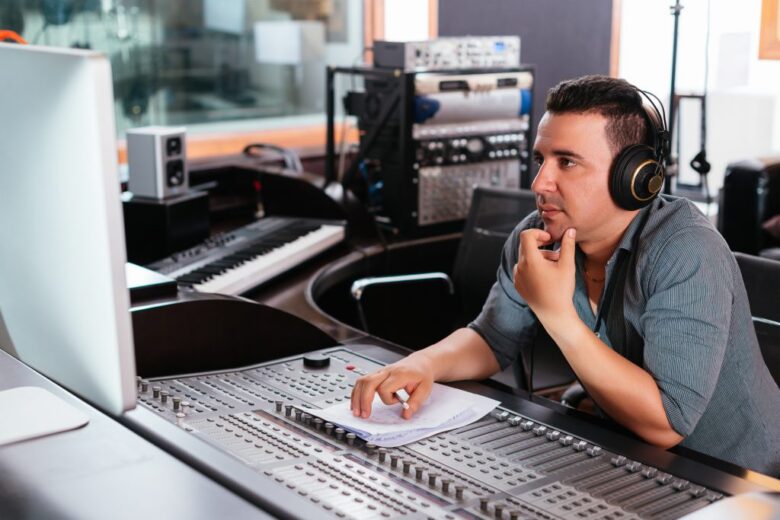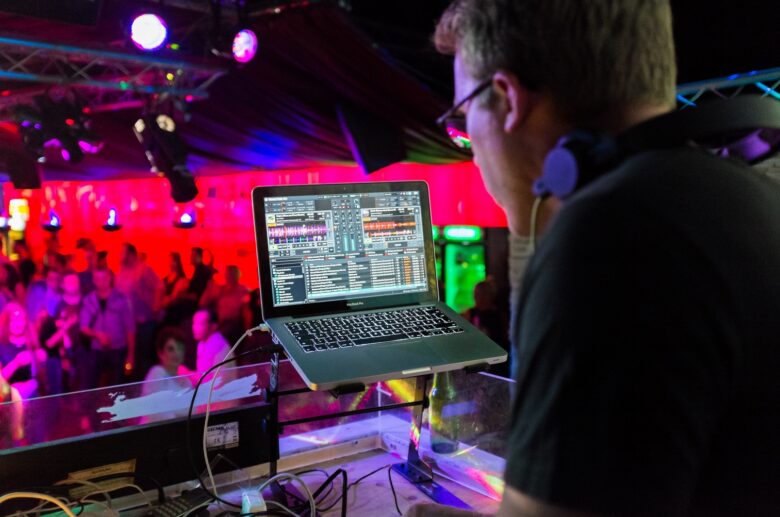Live sound mixing differs slightly from studio mixing. It can be tremendously thrilling as well as terrifying. However, you only get one chance to make a performance sound great. There is no going back or doing a different take because everything is happening momentarily.
You’ll be a sonic genius if everything works out perfectly, otherwise, you might be dealing with some frustrated musicians. Getting it right every time might be challenging because every location is unique and has its room acoustics.
The best approach to becoming proficient at working with live sound is through practice for which you can join a live sound training course. The more exposure to live audio knowledge you have, the better you will become.
Everybody can recall their first live performance, and for most individuals, live sound engineering is a roller coaster of highs and lows. Know your audio equipment and, as a general rule, place yourself in the position of your musical performers. You can boost your live sound engineering by using the helpful advice in this article.
Contents
Pay Attention to the Room and Lead Vocal

Source: ipr.edu
Pay close attention to the surroundings where you will be mixing and comprehend the atmosphere its shape and architecture naturally generate. Keep an eye out for any nodes or frequencies that stick out and could be problematic for maintaining the desired level of your lead vocal.
The lead voice is the most crucial channel in your mix, so take extra care to prevent it from taking off and ringing wildly during the performance. That mic holder is the one who signs your paychecks. Employ the accepted room equalization procedures using a frequency analyzer to level the space to your preferences.
Listen to music you know and ensure it sounds like it should on the system. Furthermore, locate the volume best suited for that specific location. Never try to change a room’s natural ambiance. Even outstanding engineers have left live shows in tears, doubting the very reason for their existence.
Set Your Workspace Early
Depending on the hugeness of the performance, you could show up at the venue a few hours beforehand. It will offer you a little mental peace before the band shows there (often loud and uncomfortable) and begins unloading gear.
Play a few tracks you know to check your workspace and ensure the loudspeakers, amplifiers, and consoles are functional (this will help you get a feel for the space). Inspect the stage power before you begin organizing your monitors, microphones, cords, and stands.
Once your stage is rightly set up, test the singing mics in the monitors to ensure they are operational and ready for the band to use. Ensure that you have all the necessary equipment and that it is in excellent condition. Playing the band’s recordings will give you the best chance to hear how they sound in that space before they show up.
Understand Your Gears Functions
Knowing your equipment is crucial for any live sound engineer. You must grasp how to operate that particular mixer, how plugins and compressors function, and which kind of microphone to utilize in which circumstances.
You should be able to identify each piece of audio equipment in the live mixing studio, understand what it does, and how it goes about doing it.
Understand that you can effortlessly get manuals for most audio equipment you can lay your hands on today. If you are confused about how a particular mixer functions or a piece of equipment operates, find the handbook and figure out the best way to use it.
Understand and Employ Monitoring

Source: pexels.com
The musicians depend on you to make things right for them to ensure they can perform well as you are closest to the stage.
Remember that monitor mixing corresponds to triage (the live performance procedure of classifying conflict or disaster casualties according to their musical importance to maximize the number of survival). As a monitor mixer, you may frequently think your role for a particular performer is too insane.
Every musician wants to know everything they need to do to stay in the show. There are rare occasions when you can make a gorgeous mix by giving that particular musician’s source a tiny boost, but they’ll always get a way to make your job difficult.
Understanding monitor mixing can be the ideal solution to cover any band member going off-tune and producing the perfect sounds for the audience.
Employ Audio Meters
When confusion comes in, audio meters are fantastic tools that can save you from losing focus and composure.
Audio meters are an asset in the stressful setting of live sound engineering because, while it’s nice to rely on your hearing, they can become tired.
Audio meters are incredibly helpful in boosting your self-assurance as a sound engineer. It is similar to always having a set of calibrated, trustworthy second ears.
Learn Critical Listening
Critical or active listening is a skill that you can develop. Active listening involves paying attention to the subtle audible nuances of music and sound.
As a live sound engineer, it’s crucial to know how to listen to the bass and recognize when anything sounds too thick or how to listen to high frequencies and identify when unwelcome loud sounds are present.
You can hone your hearing and become more adept at picking up on the softer audio impacts of sound with practice.
Ensure Your Performers Are Comfortable Onstage
The little things matter most. Take a bottle of water, and place it next to the main vocalist’s spot or on the drum kit riser. If achievable, print out or handwrite the set list in large and bold print and place it next to the mic stands on the ground.
Ensure that the performers’ height is appropriate for the microphones. Ever have to reposition a mic stand while carrying a musical instrument on your shoulder? Not simple.
Ensure there is often some candy ready when a performer takes the stage if you know they enjoy chocolate. Make small but meaningful gestures to demonstrate that you care and want a spectacular show.
Becoming a Pro Sound Engineer

Source: pexels.com
The sensation that comes from working on live sound is thrilling. To be confident in the sound you produce and understand how to set the appropriate sound levels for your artists and your audience takes an astounding amount of work.
Now that you are prepared to plan and carry out a project successfully, it is critical to always use what you have learned and determine where it integrates into your workflow. Although every project is unique, there are fundamental steps you can take to position yourself to succeed on every occasion. Maintain your focus, and constantly go above and beyond for your customers.
